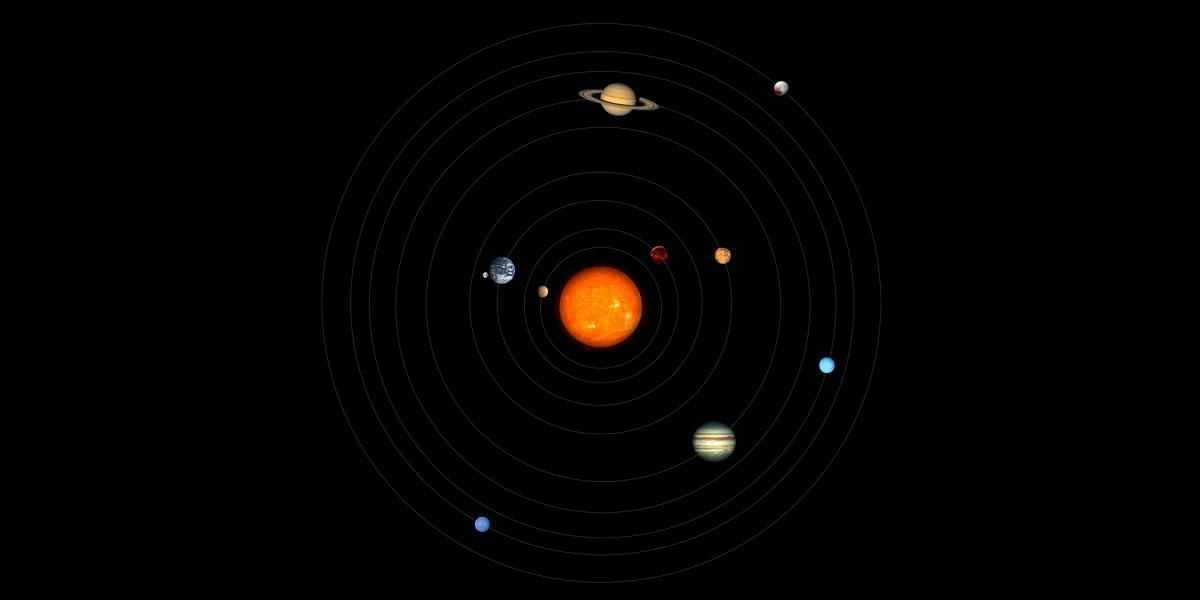
The Solar System consists of eight planets, including Earth, which is positioned third in the system. It is worth noting that only Mercury and Venus are situated closer to the Sun than Earth.
Features of Earth’s orbit
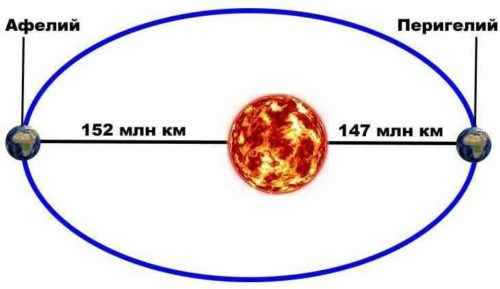
The Earth’s orbit is not a perfect circle. It can be approximated as an ellipse, which means that the distance between the Sun and the Earth varies. At its furthest point, known as aphelion, the Earth is 152 million kilometers away from the Sun. This occurs on July 4th. On the other hand, at its closest point, known as perihelion, the Earth is only 147 million kilometers away from the Sun. This occurs on January 3rd.
The Earth’s orbit speed is not constant. It changes depending on its position. The Earth moves fastest when it is closest to the Sun, which is known as perihelion. At perihelion, its speed reaches 30.27 km/s. On the other hand, when the Earth is farthest from the Sun, at aphelion, its speed drops to a minimum of 29.77 km/s. These variations in speed are relatively small. This is because our orbit has a small eccentricity of only 0.017, indicating that it closely resembles a circle rather than an elongated ellipse. In contrast, Mars has a higher eccentricity of 0.093, causing its distance from the Sun to fluctuate between 206 and 249 million kilometers. A smaller eccentricity, like Earth’s, leads to more stable climate and temperature conditions, making it more favorable for the existence of life.
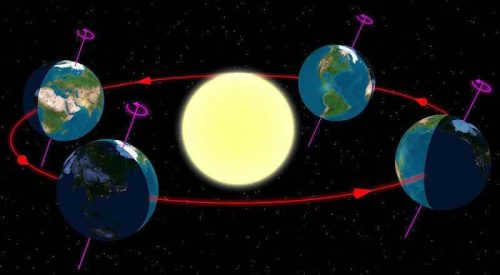
The Earth not only revolves around the Sun, but also spins on its own axis. This axis runs through the North and South poles of the planet. The Earth’s axis is tilted in relation to the orbital plane, also known as the ecliptic. This tilt has a value of 25°. It is important to note that if a planet has an axis tilt angle of zero, its axis would be perfectly perpendicular to the orbital plane.
As a result of this tilt, different hemispheres of the planet receive varying amounts of sunlight. This variation in sunlight leads to the formation of seasons, such that when the Northern Hemisphere experiences summer, the Southern Hemisphere experiences winter, and vice versa. The Earth takes not exactly 24 hours, but 23 hours and 56 minutes to complete one rotation on its axis. This slight discrepancy necessitates the addition of a leap year to the calendar.
Earth as a member of the Earth group of planets
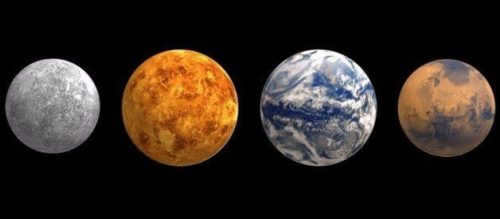
The classification of planets in the solar system divides them into two categories: giant planets and terrestrial planets. The Earth falls into the latter category, along with Mercury, Venus, and Mars. Terrestrial planets are characterized by their solid surfaces and relatively small sizes, often lacking any natural satellites.
The Earth’s size varies depending on the location of measurement. At the equator, its radius is 6378 km, while at the poles it measures 6356 km. This discrepancy is a result of the planet’s compression caused by its rotation and centrifugal forces. Among the terrestrial planets, Earth is the largest, slightly surpassing Venus in size.
The density of Earth’s atmosphere is greater compared to that of Mars and Mercury, but on Venus, it is 100 times more dense. The atmosphere of our planet serves as a shield against harmful ultraviolet rays and solar wind, and also helps in moderating temperature variations by redistributing air from the cold polar regions to the warmer equator.
The Moon: Earth’s Natural Satellite
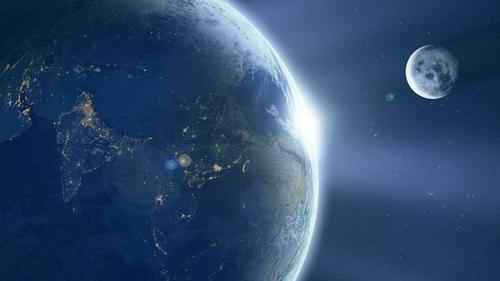
Earth stands out among other planets similar to it due to the presence of a massive satellite known as the Moon. The Moon has a radius of 1737 km, which is approximately 27% of the Earth’s radius. In comparison, the largest moon of Mars, Phobos, has a linear size of no more than 26 km. It is widely believed that the Moon formed as a result of a collision between Earth and another protoplanet. The distance between Earth and its satellite varies from 356 to 404 thousand kilometers. The Moon exerts a significant influence on Earth, causing the tides in the oceans to rise and fall. Additionally, its nocturnal illumination affects the production of hormones in certain animals, such as bees.
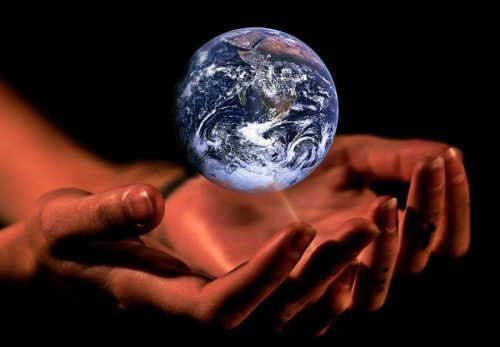
Earth possesses several distinctive characteristics that differentiate it from other celestial bodies in the solar system. One of its notable features is the presence of liquid water, which encompasses approximately 71% of the planet’s total surface area. Unlike any other object in our solar system, Earth boasts the existence of liquid water, although there is evidence suggesting that rivers once existed on Mars as well. Furthermore, the moon Titan, a satellite of Jupiter, has been found to contain substantial amounts of matter in a liquid state, with its surface being adorned by seas and rivers. However, these liquids on Titan consist of hydrocarbons rather than water. The Earth’s possession of liquid water can largely be attributed to its location within the “habitable zone,” an area that strikes a balance between not being excessively cold, preventing water from freezing entirely, and not being excessively hot, preventing water from evaporating completely.
Furthermore, the presence of water is affected by the atmosphere, which generates the essential pressure. In the case of Mars, due to the low pressure, when the ice melts (which is located in the polar caps of Mars), water immediately transitions from a solid to a gaseous state. Additionally, the chemical composition of the Earth’s atmosphere varies. The primary component is nitrogen, with a significant portion (23%) being oxygen. The percentages of other gases are considerably smaller. On the other hand, Venus’ atmosphere is composed of carbon dioxide, accounting for 96% of its composition.
Lastly, the key distinction of Earth is the presence of life, which is highly organized. No other celestial body has documented indications of even the most basic life forms.
References:
– https://geographyofrussia.com/zemlya-v-solnechnoj-sisteme/ – https://infourok.ru/zemlyachast-solnechnoy-sistemi-klass-2731262.html

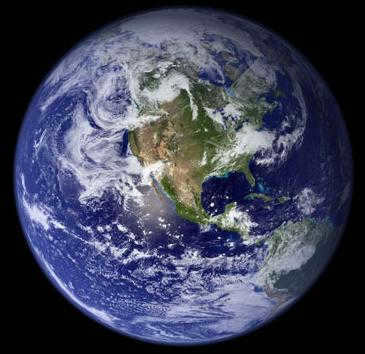
The Composition of the Earth
The Earth’s interior is composed of several distinct layers. The central core, with a radius of 1300 km, is a solid mass surrounded by a liquid outer core that extends to a depth of 2200 km. The temperature at the core’s center can reach up to 5000 °C.
The mantle, which makes up 83% of the Earth’s volume and 67% of its total mass, extends to a depth of 2900 km. It has a rocky appearance and is divided into two parts: an outer mantle and an inner mantle.
The outer part of the mantle, known as the lithosphere, is approximately 100 km thick. It is the uppermost layer of the mantle and is characterized by its rigid nature. The Earth’s crust, which is the uppermost part of the lithosphere, has varying thicknesses. On the continents, it can be as thick as 50 km, while under the oceans, it is typically around 10 km thick.
The lithosphere is composed of large plates, some of which are the size of entire continents. These plates are in constant motion, driven by convective currents within the mantle. This movement of the plates is known as tectonic plate movement and is a key factor in shaping the Earth’s surface.
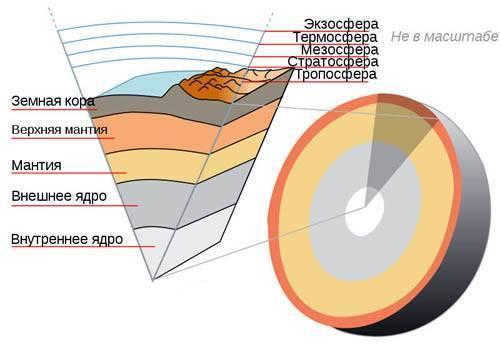
Earth’s Magnetic Field
The Earth can be considered as a generator of direct current. The magnetic field of the Earth is produced by the interaction of its rotation on its own axis and the liquid core located within the planet. This magnetic field forms the Earth’s magnetosphere. Magnetic storms, which are sudden changes in the Earth’s magnetic field, are caused by streams of ionized gas particles that originate from the Sun (known as solar wind) after solar flares. When these particles collide with atoms in the Earth’s atmosphere, they create one of the most stunning natural phenomena known as the aurora borealis. This phenomenon is characterized by a special glow that typically occurs near the North and South Poles, earning it the name of the Northern Lights. Through the analysis of ancient rock formations, scientists have discovered that there is an inversion or change of the North and South poles approximately every 100,000 years. The exact process of this inversion is still not fully understood by scientists, but they are actively working to unravel this mystery.
In the past, our planet’s atmosphere contained methane, water vapor dioxide, carbon dioxide, hydrogen, and ammonia. Eventually, a significant portion of these elements escaped into space. They were then substituted with water vapor and carbonic anhydride. The Earth’s gravitational force is responsible for maintaining the atmosphere, which is composed of multiple layers.
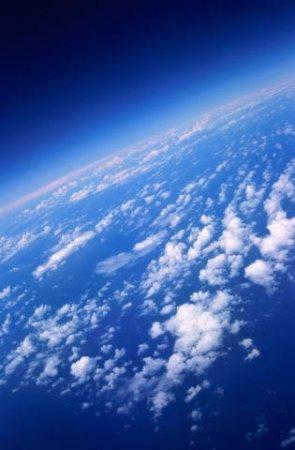
Life on Earth
The average temperature on Earth hovers around 12 °C. In the Western Sahara, it can reach a scorching +70 °C, while in Antarctica, it can plummet to a bone-chilling -85 °C. The hydrosphere, which is the water shell of the Earth, covers 71% or 361 million square kilometers of the Earth’s surface. The Earth’s oceans contain a staggering 97% of all water reserves, with some of it locked in the form of snow and ice and some present in the atmosphere. The Mariana Trench, the deepest part of the world ocean, reaches a depth of 11 thousand meters, while the average depth is around 3.9 thousand meters. Both continents and oceans harbor an incredibly diverse and awe-inspiring array of life forms. Scientists throughout history have grappled with the question of the origin of life on Earth. Naturally, there is no definitive and exact answer to this question. Only speculation and hypotheses exist.
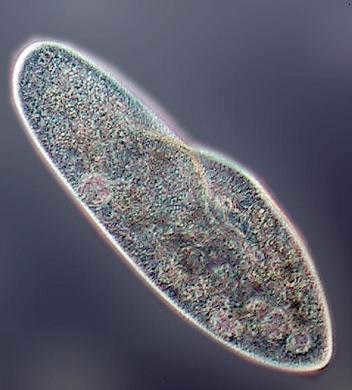
Earth’s Characteristics
– Weight: 5.98*1024kg
– Size at the equator: 12,742 km.
– Tilt of the axis: 23.5°
– Density: 5.52 g/cm3
– Temperature on the surface: -85 °C to +70 °C
– Length of a day: 23 hours, 56 minutes, 4 seconds
– Distance from the Sun (average): 1 astronomical unit (149.6 million kilometers)
– Speed in orbit: 29.7 km/s.
– Time to complete one orbit (year): 365.25 days
– Eccentricity of the orbit: e = 0.017
– Inclination to the ecliptic: i = 7.25° (to the solar equator)
– Acceleration due to gravity: g = 9.8 m/s2
– Satellites: Moon
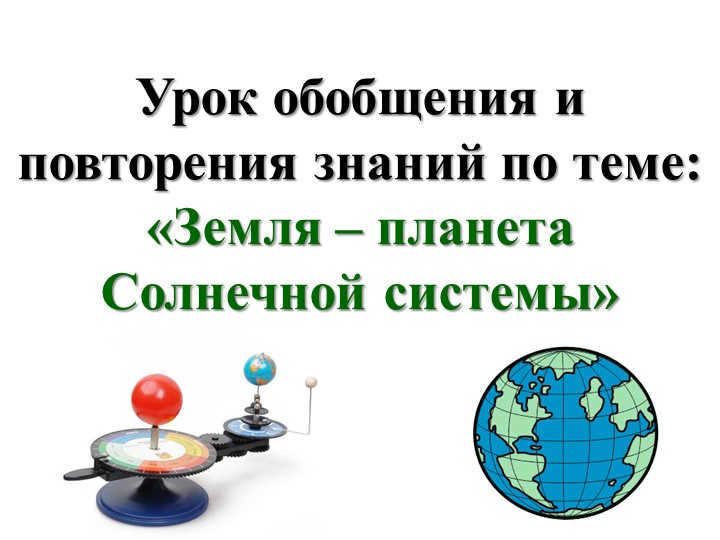
At the moment, there are extra cumulative discounts (ranging from 2% to 25%) that can be availed by 58,743 educational establishments. To determine the applicable discount for all staff members of your educational institution, please access your personal Infoworks account.


Enrich your professional skills with our course
Innovative approaches to teaching geography to children with disabilities through outdoor activities
We are pleased to offer an exclusive discount for your educational institution, which can be combined with our ongoing promotions. The discount amount will depend on the number of your colleagues who have already enrolled in the Infoworks course.
Currently, we provide additional cumulative discounts ranging from 2% to 25% for a total of 58,743 educational institutions. To discover the exact discount available for all employees of your educational institution, simply log in to your personal Infoworks account.


Professional development course
Developing primary skills in utilizing the territorial approach as a foundation for geographical thinking in accordance with FSES.
We have the ability to include your educational institution’s discount together with this offer (the amount depends on how many of your colleagues have participated in Infowork courses).
Currently, 58,743 educational institutions are receiving additional discounts (ranging from 2% to 25%). To find out which discount is applicable to all employees of your educational institution, please log in to your personal Infoworks account.


Visiting Turkey. The Byzantine architectural marvels
Breakdown of the slideshow:


Objectives of the 2nd slide:
1. Enhance understanding of the subject matter
2. Review fundamental terms and concepts pertaining to the subject
3. Acquire the ability to apply knowledge in various scenarios


On the third slide of Task 1, you need to insert the words or numbers needed in the places of omissions.
At the center of the solar system is the Sun. The Sun is a star. Around the Sun revolve eight planets, which are divided into 2 groups: inner and outer planets. Around some planets revolve moons. The Earth’s satellite is the Moon. Besides the Sun, planets and their satellites, there are small celestial bodies in the Solar System. These are asteroids and comets.
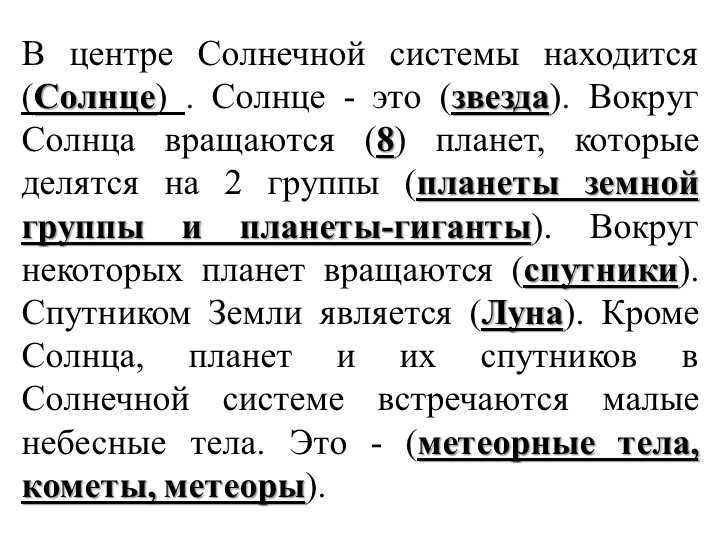

At the heart of the solar system lies the Sun, which is a star. The Sun is surrounded by eight planets, which can be categorized into two groups: the Earth-group planets and the giant planets. Some of these planets have satellites revolving around them. One such satellite is the Moon, which orbits the Earth. Apart from the Sun, planets, and their satellites, the solar system also contains smaller celestial bodies such as meteor bodies, comets, and meteors.


Slide 5: Verify the answer key.
If you found 9-10 hidden terms, give yourself a grade of “5”.
If you found 7-8 hidden terms, give yourself a grade of “4”.
If you found 4-6 hidden terms, give yourself a grade of “3”.
If you found less than 4 hidden terms, give yourself a grade of “2”.
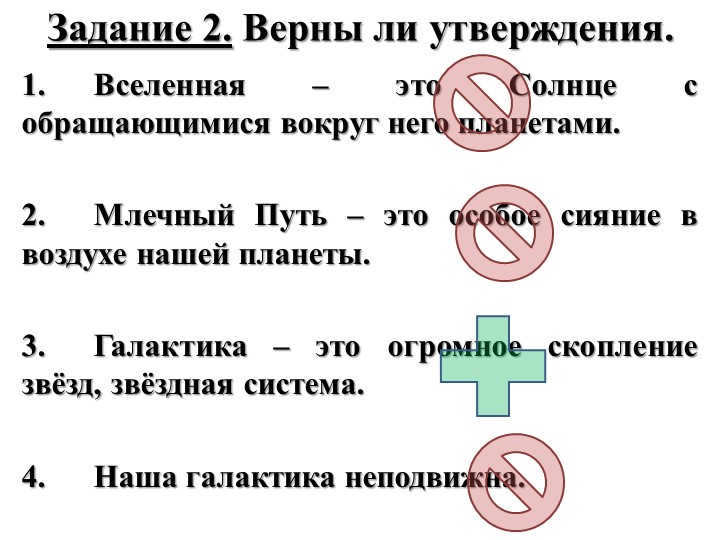
1. The Sun is at the center of the Universe, with planets revolving around it.
2. The Milky Way is a distinctive luminescence in the Earth’s atmosphere.
3. A galaxy is an immense gathering of stars, forming a star system.
4. Our galaxy remains stationary.
Task 2. Determine the accuracy of the statements.
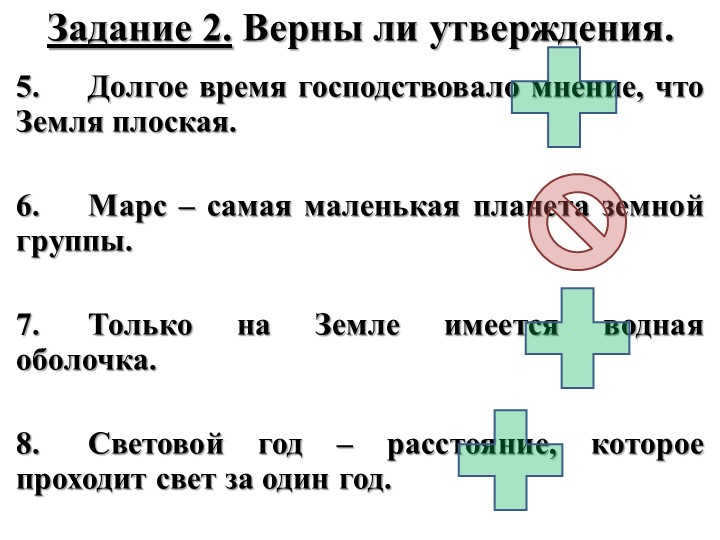
Slide 5: It has been widely believed for a considerable amount of time that the Earth is a flat celestial body.
Slide 6: In the group of planets that the Earth belongs to, Mars is known for being the smallest.
Slide 7: Out of all the planets, only the Earth possesses a substantial amount of water in the form of a water shell.
Slide 8: A light year is the unit of distance that represents the distance light can travel within the span of one year.
Task 2: Determine whether the statements are accurate or not.

Slide 9 Task 3. Please respond to the subsequent inquiries:
1) Amongst which celestial bodies does Earth reside?
2) How do giant planets differ from Earth group planets?
3) What term is used to describe a year?
4) How long does an Earth day last?
5) Which distance is greater: from the Earth’s center to the equator or to the pole?


Slide 10: 6) Can you name any galaxies that you are familiar with?
7) Can you list the planets that are positioned before Earth and also state the number of Earth in that sequence?
8) What do we call a 24-hour period?
9) How long does it take for Earth to complete one orbit around the sun?
10) In which galaxy is our planet Earth located?
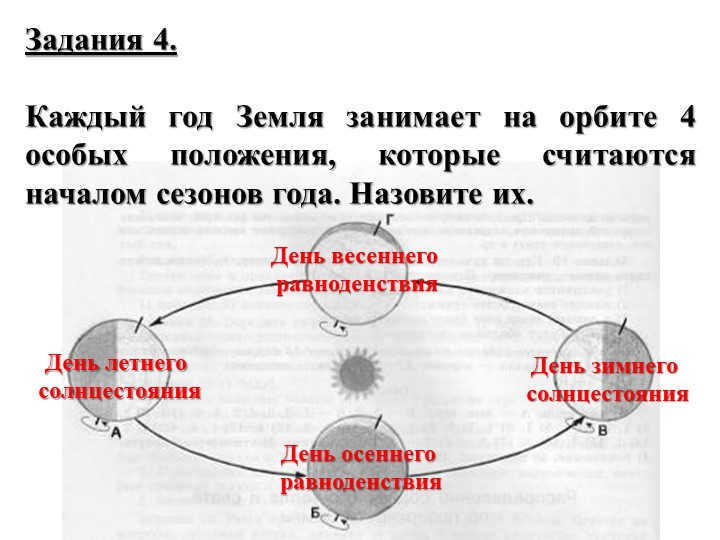
Every year, Earth goes through four specific points in its orbit that mark the start of each season. Can you identify them?
The first one is the vernal equinox, which occurs in spring.
The second one is the fall equinox, which marks the beginning of autumn.
The third one is the summer solstice, which is the longest day of the year and marks the start of summer.
Lastly, we have the winter solstice, which is the shortest day of the year and marks the beginning of winter.


Slide 14, question 2. What sets Earth apart from other planets in our solar system?
A) Its spherical shape
B) Its orbit around the Sun
C) Its rotation on its axis
D) The existence of life
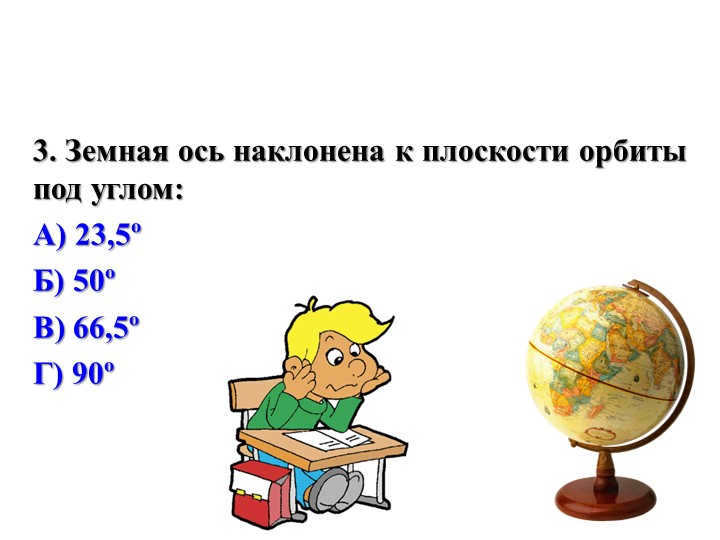
Slide 16, question 4. Associate the date with the corresponding day name:
A) March 21 1) Winter Solstice Day
B) June 22 2) Fall Equinox Day
C) September 23 3) Vernal Equinox Day
D) December 22 4) Summer Solstice Day

Question 18 slide 6. What is the duration of the Earth’s rotation around its axis?
A) 365 days
B) 24 hours
C) 128 days
D) 72 hours

Slide 7, question 19. The primary factor contributing to the disparity between day and night on Earth is:
A) the inclination of Earth’s axis in relation to the orbital plane
B) the rotational movement of the Earth
C) the Earth’s form
D) the Earth’s dimensions


Slide 22: Assess your performance:
0-1 errors – grade “Excellent” (5)
2-3 errors – grade “Good” (4)
4 errors – grade “Satisfactory” (3)
5 or more mistakes – “Unsatisfactory” (3). (2)
The Earth is the sole planet within the solar system that supports life. Additionally, where life exists, there must be the presence of both air and water. Consequently, Earth is frequently referred to as the “blue planet,” and it remains the most extensively studied celestial body to date.
Overview of the Earth
The Earth, which is approximately 4.5 billion years old, is a spherical planet and the fifth largest in our solar system. Positioned as the third planet from the Sun, it has a diameter of 40,076 kilometers and rotates continuously. Its sole satellite is the Moon.
The Earth’s composition consists primarily of oxygen, hydrogen, iron, sulfur, and silicon. It follows an elliptical orbit around the Sun, with a radius of 150 million kilometers. The Earth completes one orbit in one year, equivalent to 365 calendar days. Its rotation speed is approximately 29.8 km/sec, and its average distance from the Sun is about 149,543,000 kilometers.
Our planet orbits around the Sun, moving closer and farther away, resulting in the changing of seasons.
"Structure of the Earth”
Scientists categorize our planet into three main parts:
- The core – the inner layer of the Earth, believed to be composed of iron and nickel. Its temperature reaches up to 6,000 °C. The core makes up approximately 17% of the Earth’s volume and is situated at a depth of over 2,900 kilometers. It is divided into a solid inner core and a liquid outer core.
- Mantle: The mantle is a layer of the Earth that is located between the crust and the core. It comprises approximately 80% of the Earth’s volume and has a mass that is nearly 70% of the total mass of our planet. The temperature within the mantle can reach up to 2,000 degrees Celsius. Despite such high temperatures, the mantle exists in a state that is both solid and liquid due to the immense pressure it experiences.
- The crust: The crust is the Earth’s outermost layer, characterized by its hardness and relative thinness. Its thickness ranges from 8 to 40 kilometers, which is about 90 times smaller than the Earth’s radius. Underwater, the crust measures between 5 and 10 kilometers thick, while on land it can reach up to 80 kilometers. The crust constitutes less than 1% of the Earth’s total mass and approximately 5% of its volume.
Key features of planet Earth
The Earth is composed of approximately 80% water and only 20% land, including six continents: Eurasia, Africa, Australia, North/South America, Antarctica, and various islands.
Mount Everest, standing at an elevation of 8,852 meters above sea level, is the highest point on Earth.
There are four primary climate zones on Earth: equatorial, tropical, temperate, and polar. Additionally, there are four transition zones: subtropical, subequatorial, subarctic, and subantarctic.
The Earth experiences its highest temperatures along the equator, with temperatures reaching up to +70 degrees Celsius, while Antarctica boasts the coldest temperatures, dropping to -85 degrees Celsius.
Earth’s water system
Thus far, there has been no discovery of water on any other planet in our solar system. Our planet, often referred to as the “blue planet,” stands alone with its unique hydrosphere. The most significant component of Earth’s water system is the World Ocean, which can be categorized into four major bodies – the Atlantic, Pacific, Indian, and Arctic Oceans.
At a staggering depth of 11,022 meters below sea level, the lowest point on Earth is situated in the center of the Mariana Trench, located at the floor of the Pacific Ocean.
Earth’s atmosphere
The Earth’s atmosphere serves as a shield, safeguarding our planet from various threats including meteorites, which are incinerated upon entering the upper atmosphere, and harmful ultraviolet radiation.
Undoubtedly, numerous individuals have had the opportunity to marvel at the breathtakingly stunning photographs of our planet, captured by astronauts from space. These images depict the exquisite Earth enveloped in a captivating “cloak” of clouds, emanating a vibrant blue hue. This mesmerizing glow can be attributed to the presence of oxygen in the atmosphere.
The Moon: Earth’s Loyal Companion
Our planet’s loyal companion, the Moon, holds a special place in our history and scientific exploration. Not only is it the only celestial body that humans have set foot on, but it was also the first one to provide us with samples from its surface. Situated approximately 384,470 km away from Earth, the Moon is made up of a core, mantle, and crust, with a diameter of around 3,474 km.
Unlike Earth, the Moon doesn’t possess a habitable atmosphere. It travels in an elliptical orbit around our planet, completing a full revolution in 27 days. While it does rotate on its own axis, it always presents the same face to Earth, preventing us from observing its entire surface. We can only see the sunlit portion.
The Moon’s influence on Earth is profound. Its close proximity affects the tides and has an impact on our planet’s magnetic field. Additionally, the Moon acts as a shield, intercepting meteorites that might otherwise collide with Earth.
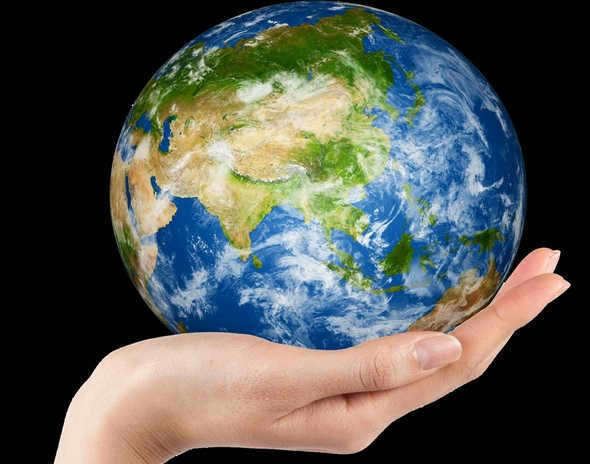
- Our planet, known as the “blue planet,” is positioned as the third planet from the Sun and is the only planet that can support a diverse range of flora and fauna.
- The Earth follows an elliptical orbit around the Sun, resulting in varying distances from the Sun throughout its orbit. This phenomenon is responsible for the changing seasons. Additionally, the Earth rotates on its axis, causing the alternation of night and day.
- The Earth consists of three main layers: the core, the mantle, and the crust.
- The vast bodies of water on Earth are collectively referred to as the World Ocean, which is divided into four major oceans. Moreover, our planet is home to numerous seas, rivers, and lakes.
- On land, there are six continents and a multitude of islands. Each continent possesses its own unique geographical features, such as mountains, deserts, plateaus, and plains.
- The Earth is enveloped by a thick atmospheric “cocoon” comprised of oxygen, nitrogen, argon, and other volatile gases. The ozone layer within this atmosphere shields the planet from the harmful impacts of solar and cosmic radiation.
- The Earth possesses a natural satellite, known as the Moon. As a result of the Earth’s magnetic lunar field, tides and currents are generated in the oceans and seas.





